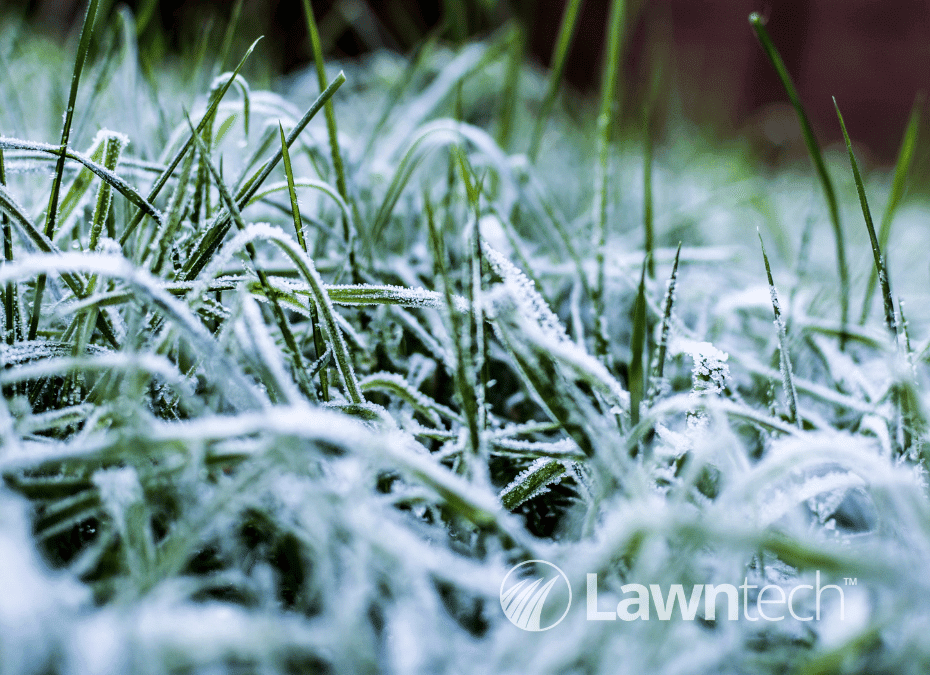With winter on its way, and the cold creeping in, you may be wondering how best to prepare your much-loved lawn for this season. We’ve put together a useful winter lawn care guide so that you can wrap up warm inside, content that your lawn is well equipped for these dull, dark months ahead.
Sweep away those leaves
This task deserves its place on the top of your winter lawn care list. Periodically sweeping any fallen leaves and debris from your lawn is one of the most important jobs this season. Using a light rake or brush, gently sweep away leaves to allow your lawn to breathe and grab hold of any sunlight. At a time of year when sunlight is minimal, your lawn needs to be exposed to any last drop in order to harvest as much energy as possible for winter.
Fallen leaves left to sit in your lawn will also trap in moisture and encourage lawn disease. Instead, sweep them up to be used for composting, a good source of nutrient for your soil.

The most helpful thing you can do throughout the winter is to keep your lawn clear of leaves.
Stay off the frost!
If practical, don’t walk on your frosty or snowy lawn. Though frost on your lawn itself won’t damage your grass plants, it’s important to remember frozen glass plants are brittle, and any foot traffic across these weakened grass leaves will cause them to fracture. This will damage your grass plants and they likely won’t recover until the spring. So wherever possible, keep foot traffic to a minimum this winter to protect your lawn from any injury.

Walking across your frosty lawn will cause damage to your grass.
Service your mower
Rather than hiding away your mower this winter, prepare ahead, and consider having your mower serviced so that you are all set for spring when it arrives.
The significance of every lawn mower service is to ensure that the blade is sharpened and balanced. Sharp blades are vital to the health of your lawn, as blunt blades rip the grass rather than cutting it and leave it susceptible to disease and damage. Neglecting your mower over winter could mean you suffer the agony of getting your mower out for its first cut of the year, only to find it won’t start or function correctly so it’s best to plan ahead. Take a look at our helpful guide to servicing your lawn mower here.

Your lawn mower is vital to keeping your lawn healthy. So if your first cut of the season is delayed because the mower is out of action, your lawn may well suffer as a result. Plan ahead, and service your mower in winter.
Mow if conditions are suitable
Lawns tend to go dormant for winter, although mild conditions can encourage your grass to grow. If your grass is still growing and requires a cut, then please do so if necessary and conditions are suitable.
It’s important you don’t mow the lawn whilst its wet or frosty, this can only cause damage to your grass and clog up your mower. Raise your mowing height a little and wait for a dry, sunny afternoon when the lawn has defrosted for a healthy winter cut. Remember to remove any grass clippings from your lawn too prevent thatch build up and disease.
Give your garden wildlife a helping hand
For our wildlife in winter, food can be harder to come by so remember to fill up any bird feeders to help your feathered friends. Piles of leaves and debris you sweep up from your lawn can be used as a shelter for winter wildlife.
If your garden features a pond, make sure it’s covered to protect it during these winter months. For a short-term solution, floating objects such as tennis balls to encourage natural water movement will stop your pond from freezing over.

The colder months make finding food a harder task for wildlife during winter so top up your bird feeders and give our little feathered friends a helping hand.
Don’t walk on a waterlogged lawn
If conditions during winter become very wet, stay off the lawn as much as possible until conditions improve. Walking on a waterlogged lawn will only exacerbate the problem as it will further compact the lawn and is likely to pull up the grass from the soil turning your lawn into mud.
Dark, damp conditions are also perfect for moss to become rampant. If you prepared your lawn for moss invasion with a moss treatment in the autumn, then a winter moss treatment in January or February will work to effectively control this.

Moss thrives in dark, damp conditions. At Lawntech, we recommend a moss treatment during autumn and again in winter when conditions are cool and damp to effectively control moss.



